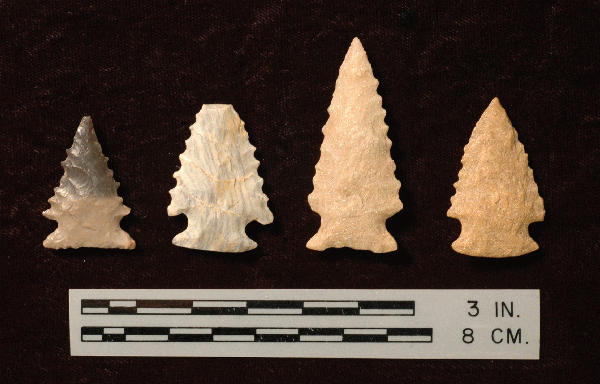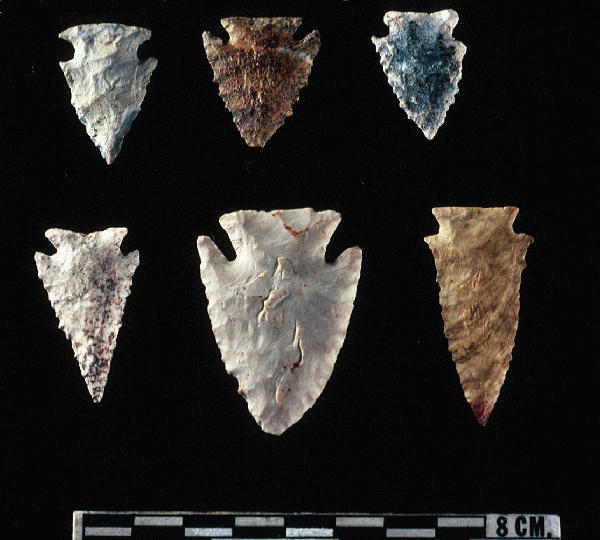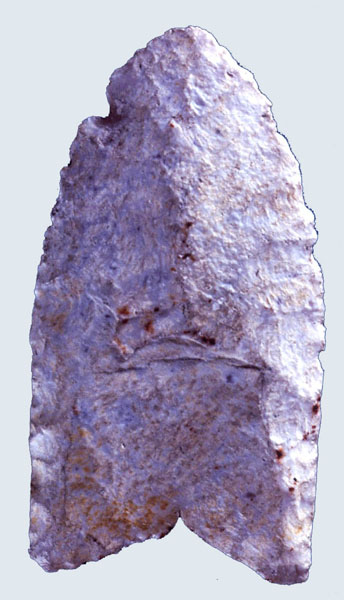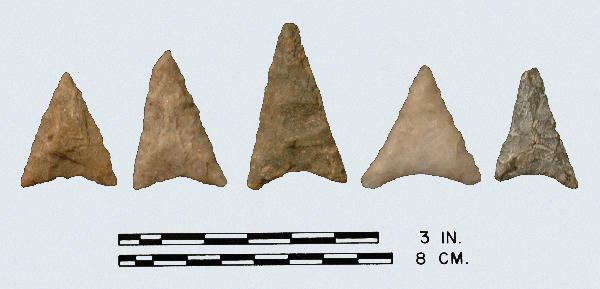
Palmer: chert, chert, quartzite, quartzite.

Palmer: William Allgood Collection, all chert.
Type Corner Notched Early-Archaic
Defining Attributes
The Palmer is a small, thin corner-notched point with a straight, ground base and pronounced serrations.
Chronology
The Palmer point dates to the Early Archaic period, 8000 to 7200 BCE. Coe recognized the Palmer point as the earliest notched point in North Carolina. Gardner placed the Palmer in his Early Archaic Phase I, 8000 to 7300 BCE. McAvoy (1990) places the Palmer point along the Nottoway River within the period from 7600 to 7200 BCE. Palmer points recovered at the Brooks Run Site (44CU0122), dated to between 8030 to 7390 BCE with nine C14 dates (Voigt 2004).
Description
- Blade: The blade is small and triangular. The sides are occasionally rounded or concave, but usually straight. Most specimens are serrated, some quite deeply.
- Base: The base is straight and usually thoroughly ground.
- Size: Length ranges from 25 to 60 mm. Width ranges from 15 to 35 mm. Thickness ranges from 4 to 12 mm.
- Technique of manufacture: These points were made by pressure flaking upon a flake. Occasionally tear-drop performs are found, indicating that the point may proceed through a perform stage.
Discussion
This point is made from a wide variety of material and is distributed across all of Virginia and much of the eastern part of the United States, particularly in the mid Atlantic. The Palmer point as described in the literature for the mid Atlantic region spans almost a thousand years of time. Separating Palmer from Kirk Corner Notched is problematic and may account for the wide range of dates for the type.
Defined in Literature
Coe (1964) originally defined the type based on points recovered from the Hardaway Site in the Piedmont of North Carolina.
References




